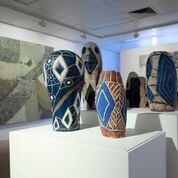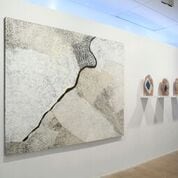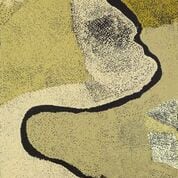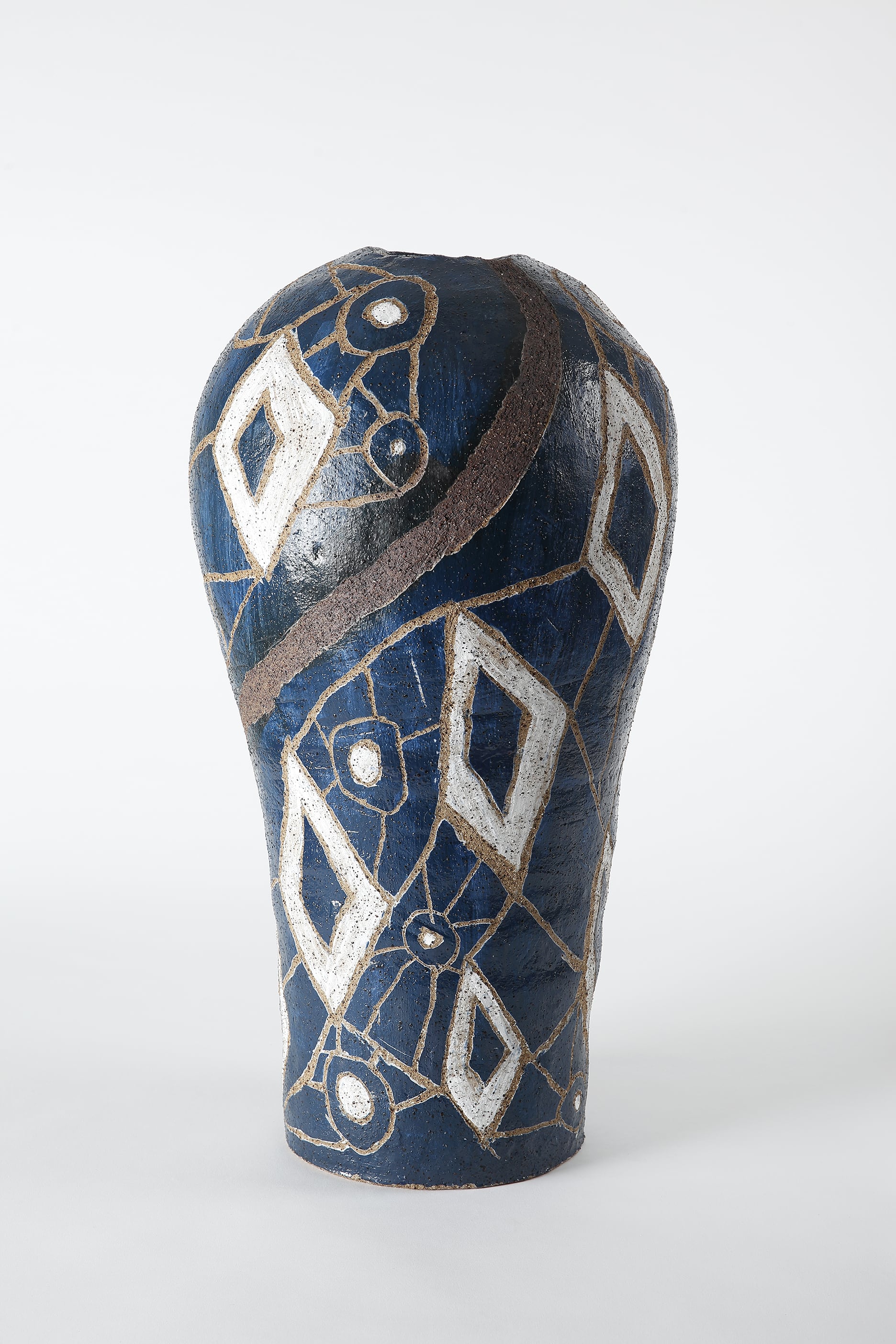



In April 2017, accompanied by a small convoy of artists and arts workers, Pintupi man Pepai Jangala Carroll embarked on a unique and momentous return to country. He travelled over 800 kilometres from his home in Pukatja (Ernabella, South Australia) to the birthplace of his father, Henry Paripata Tjampitjinpa. The journey’s two major destinations of childhood significance were located deep in the Northern Territory side of the Western Desert region: the salt lake of Wilkinkarra (Lake MacKay) and one of its associated soakages, Ininti. As a five-year-old Pepai was sent away to live with family in Pukatja when the sudden death of his mother at Hassts Bluff was tragically followed by the death of his father a few years later. Although Carroll remained in Pukatja for his entire working life, his advanced manual dexterity and formidable community standing were only turned to artmaking during his retirement years. Now, he has established a reputation as one of Ernabella Art's most senior practitioners. His paternal homeland has never wavered as both a source of constant inspiration and a recurring subject within his oeuvre of painting and ceramic sculpture.
A body of works responding to Carroll's return to country was exhibited at Outstation Gallery as a major drawcard of this year's Darwin Arts Festival. This solo exhibition featured paintings characterised by Carroll's signature palette of muted colours drawn from the landscape, executed in tonal variations which gradate with an almost cartographic sensibility. Dotting is ordered from density to sparseness, separating out planes of land while interpellations of dots and lines come up against full blocks of strokes. Breaking these textured planes are solid shapes of water – the essential resource that sustained both the child and adult artist during his trips to Ininti – carved out as commanding, black negative space. Considering the symbolic prevalence of water within Carroll's conceptual concerns, it makes sense that the artist would eventually turn his attention to the creation of stoneware vessels. These sculptures reference the same water-sources in punchy, gritty shapes and patterns. Their sureness of line testifies to the artist's deep knowledge of his subject. Installed together, the two mediums converge on this same theme from the distinct qualities their respective materials embody. Coming together in this way, the ensemble powerfully communicates every step of the artist's incredible journey.
Being away from his father's and grandmother's country for seventy-odd years meant Carroll had a significant amount of unfinished cultural business to attend to. His return included a necessary stop at Walungurru (Kintore), where he sat with senior Pintupi clansmen who picked up where his father had left off in the guidance and development of the artist's socio-cultural education. This private and powerful event folding Carroll's self into the collective mode was witnessed by Luke Scholes, one of the accompanying arts workers and the current curator of Aboriginal Art at the Museum and Art Gallery of the Northern Territory. Scholes comments in the exhibition catalogue:
As an elderly man enmeshed in a patriarchal society that values knowledge above all else, Pepai's journey into the relative unknown was profoundly brave.
Out of everything Carroll can be commended for artistically – his signature style, his experimental approach to materials, his lucid conceptual vision – Scholes applauds the bravery in Carroll's trust and willingness to make himself vulnerable for the sake of advancing his understanding of place, his connection to his country and kin.
It goes without saying that the outside viewer cannot wholly appreciate the significance of Carroll's reconnection in the way it was spurred by those Walungurru conversations. The artist does not invite us to try. However, parallels can be drawn between the way Carroll approached those old men and the way we as non-Pintupi viewers approach his solo exhibition. Engaging with this body of work requires the non-Pintupi viewer to enter into a conversation as the unknowing while the artist's position flips to inhabit that of the knowledgeable. Carroll instrumentalises his cultural authority to visually impart what can be learnt of the significance of his paternal homeland. One piece echoes the concerns of the next through their recurring titles: Ininti; Yumari; Ilpili; Walungurru. Such echoing or repetition of place is an important element in the passing of knowledge within the oral tradition of Carroll's people. By transposing this cultural practice into an artistic sensibility, the artist imparts information in a similar mode to how he has received it. The result is that the non-Pintupi viewer gains an appreciation for the profound significance of these places even as they cannot access the cultural framework that it draws from.
It is rare that a solo exhibition is guided by such a strong, cohesive and overarching principle. This prevailing quality of Carroll's practice makes it impossible to pick strongest or weakest links. Seeing the ceramic and hung works grouped together, alive and conversing between each other and with the viewer intensifies their palpably deep significance. To learn of the artist's recent return to country in this way, to witness these works echoing the implication of that return, and to be part of the visual conversation that ensues, is nothing short of a privilege.
Carmen Ansaldo is a freelance arts writer and arts worker at the Museum and Art Gallery of the Northern Territory and Darwin Community Arts.
